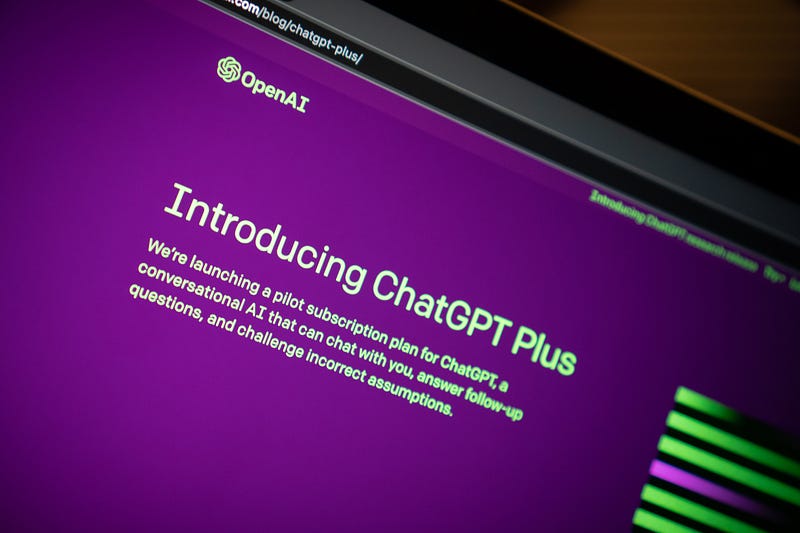Unlocking the Potential of AI for English Language Learning
Written on
Chapter 1: The Role of AI in Language Learning
Can English be learned with the help of AI? The emergence of ChatGPT-3 has made artificial intelligence a hot topic. Major tech companies are integrating AI into their products, while educators grapple with how to incorporate AI into learning without compromising its integrity. Despite the challenges posed by AI regarding authenticity and validity, it also presents significant opportunities for language learners.

AI: Current Insights
In the field of applied linguistics, researchers focused on computer-assisted language learning (CALL) are particularly interested in the potential of AI. As of 2023, studies have been examining how AI can enhance language acquisition. This interest is not entirely new; research in CALL has been ongoing since the 1980s (Tfazoli & Golshan, 2014). The introduction of ChatGPT has reignited this interest, presenting new possibilities for language education.
Prior to the launch of ChatGPT in 2022, AI was already being utilized in various language learning tools. A systematic review conducted in 2021 analyzed 53 studies from 2017 to 2020, revealing that the majority of AI applications focused on speaking and listening skills (around 26%). Other areas explored included writing (21%), pronunciation (21%), grammar (13%), vocabulary (9%), and reading (8%). The research highlighted the effectiveness of these AI tools in error detection, providing feedback, and assessing language capabilities.
Another review indicated that conversational AI was predominantly implemented in chatbot formats, where students interacted with a bot through spoken or written input. These tools proved beneficial due to their motivating features (Ji, Han & Ko, 2022).
AI: Emerging Opportunities
Microsoft's substantial investment in OpenAI, exceeding $1 billion as early as 2019, signaled a commitment to AI development. This investment gained attention in 2022 when ChatGPT was launched, leading to even more significant investments and partnerships, including the integration of ChatGPT into Microsoft's Bing search engine. This trend underscores the growing importance of AI in language learning.
It’s crucial to appreciate that ChatGPT and similar tools rely on extensive language models, which improve with increased investment, leading to more authentic interactions. Previous iterations of AI, known as ‘bots’, were limited in their responses, often relying on pre-written answers. In contrast, modern conversational AI models offer a dynamic learning experience, which is particularly advantageous for language learners.
In March 2023, Duolingo introduced Duolingo MAX, powered by ChatGPT-4, featuring two AI-driven functionalities: Roleplay and Explain My Answer. Roleplay allows learners to engage with chatbots in realistic scenarios, enhancing conversational practice. While earlier language programs offered similar simulations, the responsiveness of today's AI makes the experience significantly more immersive.
The Role of Tutorlily
Godwin-Jones (2023) explored the impact of AI on language learning spaces, including tools like Tutorlily, an AI chatbot utilizing ChatGPT-4. My experience with Tutorlily's free plan confirmed its functionality, as it initiated conversations based on the learner’s proficiency level. The platform promptly corrects mistakes and provides explanations, enhancing the learning experience.
Conversational AI tools like Tutorlily create authentic communication environments while alleviating language anxiety, which often stems from the fear of making mistakes. This supportive setting encourages learners to engage more freely with the language (Ji, Han & Ko, 2022).
Learner-Centric Approaches in AI
These advancements prioritize the learner by offering AI-generated activities tailored to their Zone of Proximal Development (ZPD). This approach fosters an environment where learners can thrive with minimal assistance, experiencing success while facing appropriately challenging tasks.
AI-driven tools can deliver personalized feedback on language skills. For instance, FeedbackFruits provides tailored feedback on academic writing based on criteria set by instructors. Grammarly offers similar assistance, although its effectiveness may vary based on learners' proficiency levels (Godwin-Jones, 2022).
Innovative feedback mechanisms, such as those explored by Ruan (2021), utilize conversational AI to provide adaptive responses, motivating students by comparing their work to correct answers. This level of personalized support can help learners overcome obstacles in writing, allowing for a more fluid learning process.
The Future of AI in Language Education
As companies like Duolingo strive to "create the ultimate language teacher" (Marr, 2023), a pertinent question arises: Can AI truly replace human teachers? While AI may one day replicate some aspects of teaching, effective communication involves more than just vocabulary and grammar. It requires an understanding of context, emotional intelligence, and the ability to facilitate dynamic discussions.
AI should not be excluded from the classroom; rather, it can serve as a valuable tool for educators. By incorporating AI into their teaching strategies, instructors can enhance the learning experience and guide students in utilizing these tools effectively.
With ongoing investments in AI technology, the potential for creating an ideal language-learning companion is vast. However, it's essential to remain cautious, as trends in technology can shift rapidly, much like the fate of the metaverse. The hope is that tools like ChatGPT will continue to be relevant and beneficial to language learners.
Chapter 2: AI Tools Transforming Language Learning
In this video, "Speak English with AI (Spoiler Alert: That's Awesome!)", explore how AI is reshaping the way we learn English and the exciting possibilities it offers.
The video "How to use Chat GPT & AI to Learn and Improve your English #ai #chatgpt #English" provides insights into leveraging AI tools for enhancing your English language skills.